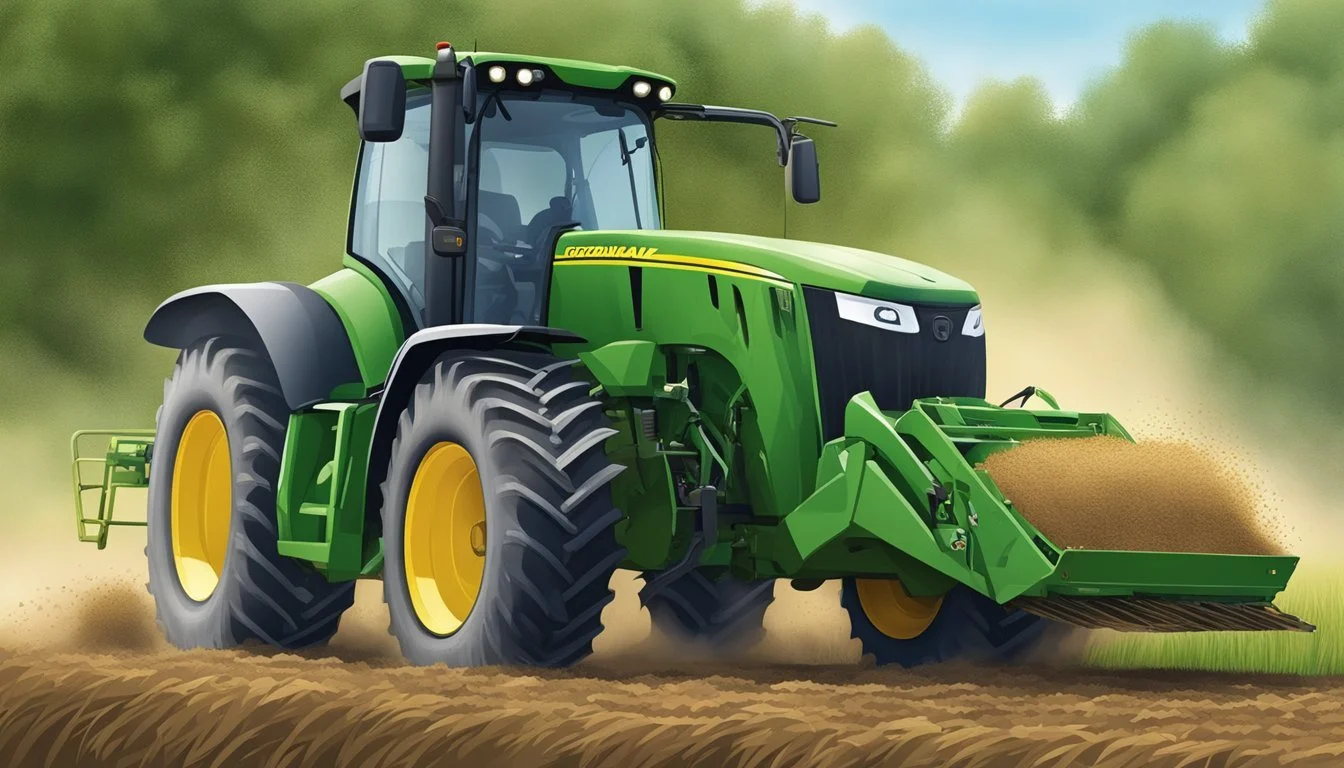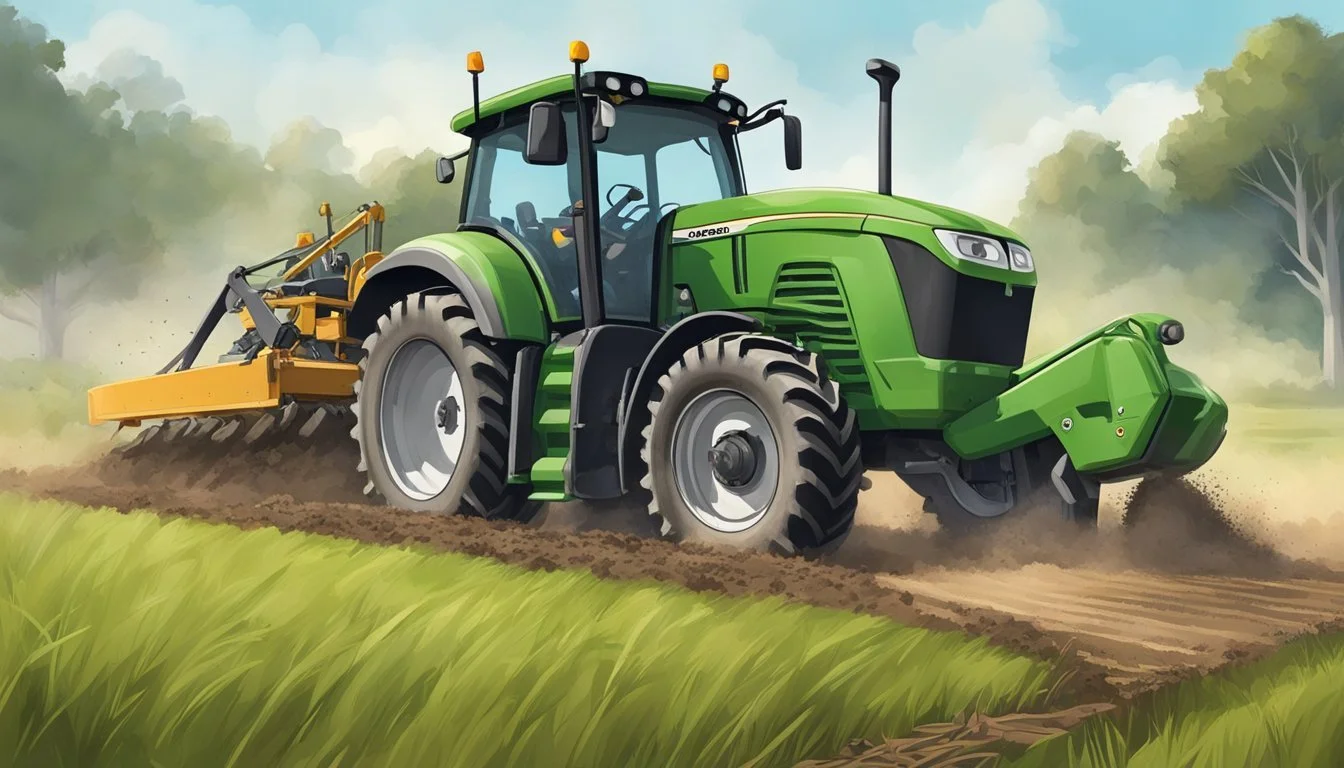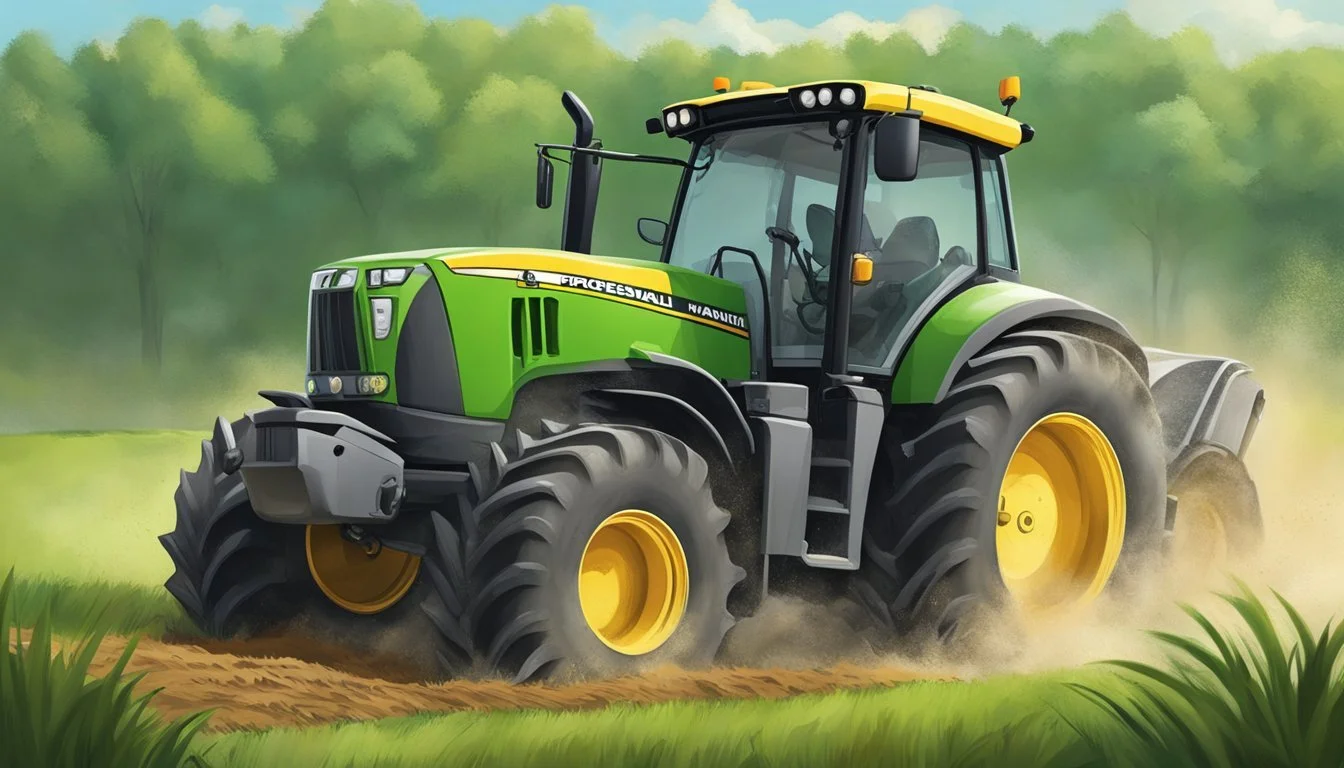Improve Your Grasslands
Benefits of a Powerful Pasture Renovator
Renovating pastures is a crucial agricultural strategy that enhances the health and productivity of grasslands. Through renovation, farmers and land managers can revitalize soil fertility, control weed infestation, and ultimately boost forage quality. Successful pasture renovation involves a series of well-planned actions, from assessing existing conditions to selecting and implementing appropriate practices. These may range from moderate interventions like frost-seeding to augment the legume population, to complete overhauls where existing vegetation is cleared and a new seedbed is prepared.
Pasture health is not just about the visible blade of grass; it extends deep into the soil, where fertility sets the stage for rich, vigorous growth. Optimal soil pH levels and balanced nutrient availability are critical for root development and nitrogen fixation, which in turn affects overall plant health and resilience. Assessing the current state of pastures forms the basis for any renovation decision. It is useful to periodically monitor pastures, noting changes in plant density, signs of overgrazing, and encroachment by undesirable species. This data-driven approach ensures that pasture renovation efforts are timely and effectively tailored to the specific needs of the land.
Moreover, it's imperative to align the timing of pasture renovation with the natural growth cycles of the region's grasses and the operational logistics of livestock management. Performing renovations during the dormant season or periods of slow plant growth minimizes disruption to the forage supply and allows for better establishment of new plants. Strategically planned and executed pasture renovations lead to improved forage yields, healthier livestock, and a more sustainable agricultural operation overall.
Understanding Pasture Renovation
Pasture renovation is a significant management tool that enhances yield and health in grasslands. It provides a systematic approach to maintain and improve pasture performance.
Defining Pasture Renovation
Pasture renovation encompasses a range of practices aimed at revitalizing grassland areas. These methods vary from basic overseeding to introduce new forage species, to more extensive soil treatment and reseeding. The primary goal is to enhance the productivity and botanical composition of the pasture.
Benefits of Pasture Renovation
Renovated pastures stand to gain a multitude of benefits including:
Increased Forage Yield: Proper renovation can lead to higher biomass production.
Improved Pasture Health: Introducing resilient forage species can minimize pest and disease outbreaks.
When to Consider Renovation
One should consider renovating a pasture when:
The yield has consistently been declining despite appropriate maintenance.
The pasture health is compromised due to weeds or poor forage species.
Evaluating Pasture Conditions
Before undertaking pasture renovation, one must thoroughly assess current conditions to pinpoint areas needing improvement. This evaluation ensures that renovation efforts are effective and cost-efficient.
Assessing Soil Fertility
To gauge soil fertility, one should conduct soil tests that measure nutrient levels and pH balance. Soil fertility is crucial as it determines the ability of the pasture to sustain healthy plant growth. Tests should cover:
Nitrogen (N)
Phosphorus (P)
Potassium (K)
Soil pH
Proper soil fertility supports a robust forage base, enhancing pasture productivity. A pH range of 6.0 to 7.0 is generally ideal for most pasture grasses and legumes, promoting nutrient availability and microbial activity.
Weed Presence and Control
The weed population is a strong indicator of pasture health. An overabundance of weeds can signify poor soil conditions or overgrazing. Effective weed control strategies include:
Identifying prevalent weed species.
Evaluating their impact on forage quality.
Implementing control methods, such as:
Targeted grazing
Mowing
Herbicide application
Weed control is integral to maintaining high forage yields and preventing the spread of undesirable plant species.
Grass and Legume Varieties
Inspecting the existing vegetation reveals the composition of grass and legume varieties in the pasture. One should:
Identify dominant species
Determine the proportion of desirable forage plants
The presence of diverse, high-quality forage species suggests a well-managed pasture. If undesirable species dominate, this indicates that renovation or reseeding may be necessary to improve the pasture's productive capacity.
Soil Testing and Analysis
Before a pasture can be successfully renovated, it is crucial to perform a comprehensive soil test. This analysis will identify the nutrient levels and pH balance necessary for optimal grassland improvement.
Conducting a Soil Test
One initiates pasture renovation with a soil test to obtain a detailed view of the soil's current condition. Collecting a representative soil sample involves:
Sampling at the right depth: typically 6 inches for pastures.
Gathering multiple samples: from different locations to mix for an average reading.
Avoiding contaminated areas: such as those near roads or unusual spots.
This information forms the basis of tailoring a soil management plan aimed at enhancing pasture quality.
Interpreting Soil Test Results
Once the soil test results are available, they must be carefully interpreted to understand the levels of key nutrients, such as nitrogen, phosphorus, potassium, and sulfur. In particular, the test will reveal:
pH levels: indicating the acidity or alkalinity of the soil.
Macronutrient levels: critical for plant growth and health.
Micronutrient levels: often overlooked, but still vital for balanced soil composition.
Interpreting these results is essential in determining what amendments may be necessary to improve pasture fertility.
Adjusting Soil pH and Fertility
The fertility of pastureland hinges greatly on maintenance of optimal pH levels. If soil is too acidic (low pH), the application of lime can help neutralize it. Conversely, if the soil is too alkaline (high pH), sulfur may be used to lower it. The proper pH balance ensures that the following occurs:
Nutrient availability: improves root growth and facilitates nutrient uptake.
Effective fertilization: applying phosphorus and potassium according to soil test recommendations is critical for plant establishment and maintenance.
Overall, adjusting soil pH and fertility according to the precise guidelines provided by soil testing is key to effective pasture renovation.
Prepping for Renovation
To ensure a successful pasture renovation, one must select an appropriate method and secure the right equipment. Proper soil fertility is also essential for efficient pasture utilization during and after the renovation process.
Choosing a Renovation Process
Selecting the right renovation process hinges on the current state of the pasture and the desired outcomes. Two primary methods are:
Frost-seeding: Ideal for integrating legumes into existing pastures during late winter. This method works well when the soil is exposed to freeze-thaw cycles, which help seed incorporation.
Complete renovation: Necessary when addressing severe issues such as poor sward density or persistent weed problems. It involves killing existing vegetation and establishing a new seedbed.
Soil fertility should be addressed by:
Soil testing: Essential for determining pH and nutrient levels.
Fertilization: Tailoring a fertilization plan based on soil test results to optimize pH and nutrient levels, particularly nitrogen, phosphorus, potassium, and sulfur.
Renovation Equipment Choices
The equipment needed varies based on the chosen renovation method. Key equipment choices include:
Broadcast Seeder: For frost-seeding, suitable for dispersing seeds over the soil surface.
No-till Drill or Seeder: For complete renovation, it ensures minimal soil disturbance and precise seed placement.
Additional equipment might be required for soil preparation, such as:
Lime Spreader: For adjusting soil pH if too acidic.
Fertilizer Spreader: For applying the correct fertilization based on soil test results.
Improving Soil and Plant Health
To enhance grassland quality, addressing soil fertility, managing livestock grazing, and ensuring seeds properly contact the soil are pivotal strategies.
Addressing Nutritional Deficiencies
Soil nutrient balance is fundamental for pasture vigor. Nitrogen, a key nutrient, can be lacking in soils, resulting in poor plant growth. To correct this, a calculated application of fertilizer tailored to the soil's needs is critical. Soil tests help in pinpointing deficiencies and determining the appropriate amount and type of fertilizer to apply, which prevents the issues related to both under-fertilization and excessive nutrient application that can lead to environmental harm.
Managing Grazing Activities
Grazing activities directly impact pasture health. Overgrazing can degrade soil structure, reduce moisture retention, and impair plant recovery. Conversely, well-managed grazing, particularly rotational grazing practices, can stimulate plant growth, enhance soil fertility, and balance the stocking rate with the pasture's carrying capacity. Rotational grazing involves moving livestock between pastures to allow forage plants to recover, minimizing soil compaction and fostering a robust root system.
Optimizing Seed-to-Soil Contact
For successful pasture establishment and regeneration, seed-to-soil contact is essential. It ensures adequate moisture availability and nutrient exchange for seed germination and growth. Seed drills or a pasture renovator can be used to improve contact between the seed and soil, thereby enhancing germination rates and resulting in a denser, healthier sward. Proper seed establishment prevents weed encroachment and promotes a resilient pasture ecosystem.
Renovation Techniques
Implementing the appropriate pasture renovation techniques can significantly improve the productivity and sustainability of grasslands. Each method serves a specific purpose, whether it's to refresh the soil, introduce new seed varieties, or enhance the existing pasture.
Tilling vs No-Till Methods
Tilling involves the physical turning and breaking-up of soil to prepare a seedbed for new pasture growth. It allows for soil aeration and can help control weeds, but it may also lead to soil erosion and loss of moisture. In contrast, no-till methods avoid soil disruption. They employ specialized no-till drills which insert seeds directly into the ground without tilling, preserving soil structure and moisture levels.
Tilling: Recommended when significant soil amendment is needed.
No-Till: Beneficial for reducing erosion and maintaining soil health.
Seeding and Reseeding Considerations
Selecting the right seed variety and ensuring proper seeding rates are crucial for a successful renovation. Proper reseeding refreshes a pasture by introducing new and improved grass varieties that can coexist with existing vegetation. It is key to consider the compatibility of new seed with current pasture conditions and livestock needs.
Seeding rates vary depending on seed type and method; consult guidelines for specifics.
Reseeding should match the environmental conditions and intended use of the pasture.
Utilizing Frost Seeding and Dormant Seeding
Frost seeding is a method where seed is spread onto the soil surface during late winter, allowing the freeze-thaw cycles to help seed incorporation into the soil. Dormant seeding is performed during late fall or early winter when the ground is not frozen but the seeds will not germinate until spring. Both techniques can effectively introduce new seed without major soil disturbance.
Frost Seeding: Effective for legumes and some cool-season grasses.
Dormant Seeding: Good option when field conditions in spring are too wet for machinery.
Post-Renovation Management
Effective post-renovation management ensures the long-term success and productivity of pastures. This involves consistently monitoring growth, maintaining high forage quality, and preventing weeds from threatening pasture health.
Monitoring Newly Established Pastures
After renovation, one must vigilantly monitor new growth in pastures. Key to this is overseeing for signs of disease and ensuring that forage plants are establishing well. Regularly scheduled walk-throughs help in identifying problem areas early. They should look for uniform establishment and spot any bare patches that may need reseeding.
Maintaining Forage Quality
High forage quality is crucial for maximizing animal health and pasture productivity. Grazing management plays a pivotal role here; it is essential to allow forage to reach the appropriate stage before initiating grazing. This typically means waiting until plants are 6 to 8 inches tall. For instance:
Ideal Grazing Heights:
Grasses: 6-8 inches before grazing, leaving 3-4 inches post-grazing
Legumes: 8-10 inches before grazing, leaving 4-5 inches post-grazing
Additionally, clipping pastures can help maintain uniformity and encourage new, high-quality growth.
Preventing Weed Regrowth
Effective weed control is fundamental in post-renovation management. Newly renovated pastures are particularly vulnerable to weed pressure as forage plants have not yet fully established to compete with weeds. It's important to apply preemptive strategies such as proper fertility management to create a less hospitable environment for weeds. In cases of aggressive weed emergence, they may opt for targeted applications of herbicides like glyphosate, being mindful of its proper use and timing to avoid harming desired forage species. Regular monitoring and early intervention will help maintain the health of the pasture.
Cost-Benefit Analysis
A thorough cost-benefit analysis is vital when considering pasture renovation, balancing initial expenditures against potential long-term productivity and health benefits for the grasslands.
Calculating Renovation Costs
Renovation costs per acre can be significant, varying based on the chosen method and existing pasture conditions. Expenses include management commitment, chemicals, seed, fertilizer, and potential loss of productivity during the renovation. Using a summer smother crop could estimate costs at around $354 per acre, while a winter approach might increase this to $497 per acre.
Management Commitment: Time invested in planning and overseeing renovation.
Chemicals: Necessary for weed control and may include herbicides.
Seeds: Cost depends on the types of seeds and the seeding method used.
Fertilizer: Essential for proper soil nutrition.
Productivity Loss: While the land lies fallow, there's a temporary cessation of livestock production.
Evaluating Long-Term Gains
Long-term benefits should outweigh the upfront costs for the investment to be deemed a success. Improved pasture health and productivity, reduced risk of erosion, better forage quality, and enhanced livestock production can result. Pasture renovations can increase forage yields, which may justify the initial costs over time. Additionally, persistent grassland health can reduce future renovation needs, fostering long-term persistence and sustainability of pasture resources.
Productivity: Refers to the amount and quality of forage production.
Risk: Includes potential soil erosion and plant diseases before the pasture is fully established.
Long-Term Health: Robust grasslands can withstand adverse conditions better.
Persistence: The durability of the pasture to remain productive over multiple years without significant inputs.
Advanced Strategies
In revitalizing pastures, the advanced strategies focus on improving forage production, nutrient profiles, and overall pasture health through precise adjustments in pasture composition, pest management, and the use of cutting-edge technology.
Enhancing Pasture Composition
To boost the nutritive value and forage production of grasslands, it's essential to select the right mix of grasses and legumes. Ensuring optimal soil fertility through soil testing allows for targeted fertilization, which directly influences root development and pasture composition. A balanced pasture not only provides higher nutrition but also supports sustainable agriculture by improving soil health and reducing erosion.
Employing Integrated Pest Management
Integrated Pest Management (IPM) is an ecological approach that combines biological, cultural, physical, and chemical tools to manage pests with minimal environmental impact. IPM strategies include regular monitoring to detect pest presence, accurate identification to ensure appropriate control measures, and the application of targeted treatments to protect forage production. This minimizes the use of chemical pesticides, thereby safeguarding pasture rejuvenation efforts.
Leveraging Technology for Pasture Improvement
Farmers can employ technology to gain better access to pasture performance data and make informed decisions for pasture management. The utilization of GPS mapping, soil sensors, and precision agriculture tools linked to the internet enables the tracking and analysis of various factors affecting pasture health. These tools aid in the precise application of inputs and support effective pasture renovation strategies by providing real-time information on pasture conditions.
Conclusion
Pasture renovation is a strategic approach aimed at enhancing the productivity and health of grasslands. Implementers should prioritize sustainable practices such as soil fertility management, careful selection of species for seeding, and methods that minimize erosion. By doing so, they ensure the longevity and resilience of their pastures.
Looking toward the future outlook, the use of pasture renovators shows promise in supporting the demands of an increasing population and the need for efficient land use. Better pasture management can lead to improved forage yields, which in turn supports healthier livestock and a more stable farm economy.
The benefits of renovating pastures should be weighed against the input costs and potential drawbacks. Renovation might require significant initial investment, but when done effectively, the long-term advantages often surpass the downsides. Farmers and land managers who incorporate renovation techniques can expect to see improved forage quality and quantity, reduced weed pressure, and overall, a more productive grassland ecosystem. Hence, the decision to renovate should be made with careful consideration of both the current health of the pasture and the long-term goals of the land steward.
By continually integrating environmentally sustainable practices and staying abreast of advancements in pasture management technology, landowners can maintain the vitality of their pastures for generations to come. With a confident and informed approach, the future of pasture management looks robust and poised to meet the evolving challenges in agriculture.








